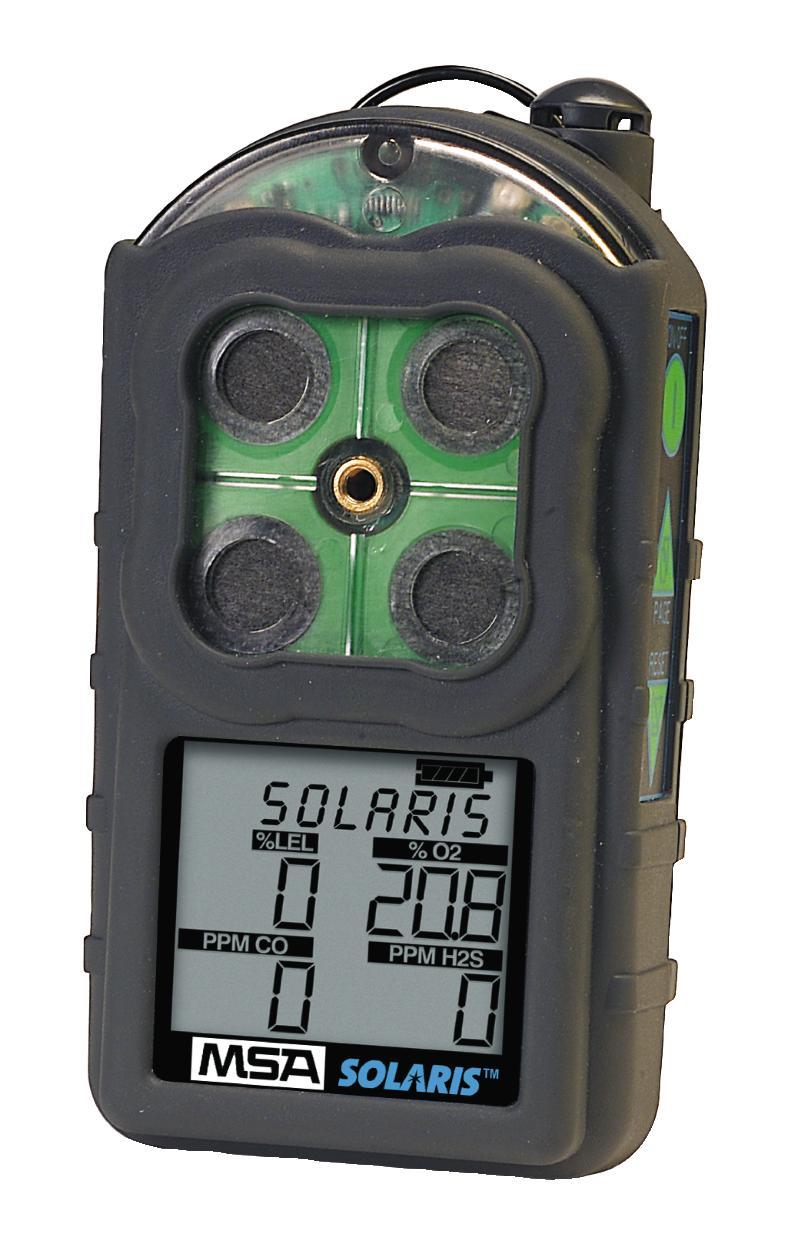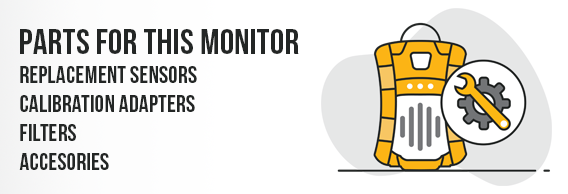Solaris
MSA Solaris Manufacturer Description
The Solaris Multigas Detector provides simultaneous detection of CO, O2, H2S and combustible gas. It weighs less than 8 ounces, and has an IP 65 rating against liquid and dust ingress. The Solaris Multigas Detector is powered with a rechargeable lithium ion battery that offers 14+ hours of continuous run time and fully recharges in less than 4 hours. Calibration is intuitive and is accomplished with the push of a single button. This auto calibration feature greatly simplifies calibration and reduces training needs. An outstanding choice for individual worker safety, MSA's Solaris multigas detector is an affordable, durable, reliable, and easy-to-use portable instrument for detecting the presence of O2, H2S, CO and combustible gas. The ergonomically designed Solaris withstands rough handling in harsh environments. At a low, competitive cost, it provides state-of-the-art engineering, a wide array of features, weighs less than eight ounces and fits in the palm of your hand.
Features:
- Ultimate flexibility: 1-, 2-, 3-, and 4-gas configurations available for O2, H2S, CO, and combustible gases
- Triple alarm system: 100+ dB horn, super-bright LED, and vibrating alarm
- IP65 rating for resistance to water spray and fine particle dust
- One-button calibration with built-in logic
- Lithium ion battery with runtime of 14+ hours, outperforms other batteries in extreme conditions
Hazards:
- Combustible Atmosphere
- Confined Space
- Fire
- Oxygen Deficiency
- Toxic Atmosphere (IDLH)
- Toxic Atmosphere (Non-IDLH)
Applications:


MSA Solaris Calibration Guide
WANT TO CALIBRATE THE MSA SOLARIS? HERE'S HOW:
- Turn the MSA Solaris on in normal reading mode. Do this by pressing the top round button, located on the right side of the monitor.
- Once the MSA Solaris is in normal reading mode, you need to send it into calibration mode. Do this by pressing and holding the lower triangle button until it beeps at you and the screen asks you to zero the monitor.
- Now that the screen is asking for confirmation, press the top round circle button once to confirm. This will send the monitor into zeroing mode. Now is a good time to set the monitor down, and grab your calibration gas, regulator, and calibration adapter.
- Open the valve on your regulator. This is a very important step so you do not ruin your calibration gas cylinder. Now screw it in to your calibration gas cylinder. Close the regulator once you hear gas spewing out of it. This is the signal to know your regulator is good to close. Continue screwing in the regulator until it stops. Do not overturn it.
- Attach the tubing to the hose barb on your regulator. Make sure the tubing is also connected to your calibration adapter.
- Wait for the screen to come up asking for you to apply calibration gas. Once this screen comes up, press the top round button again to confirm. Screw the calibration adapter in to your gas detector. Once it is screwed on, turn on your gas.
- Make sure your calibration gas values on the screen match what is on your calibration gas cylinder!
- Once the calibration procedure is completed, turn your gas off and remove the calibration adapter from the MSA Solaris. The screen will go back to normal reading mode within a few seconds.
- Congratulations! You have officially calibrated your MSA Solaris gas monitor. Make sure to record these readings in your calibration log!
| Sensor Type | Calibration Gas Value | Low Alarm | High Alarm | TWA Alarm | STEL Alarm |
|---|---|---|---|---|---|
| H2S - Hydrogen Sulfide | 20ppm | 10ppm | 15ppm | 10ppm | 15ppm |
| CO - Carbon Monoxide | 60ppm | 25ppm | 100ppm | 25ppm | 100ppm |
| LEL - Methane Curve | 58% LEL | 10% LEL | 20% LEL | N/A | N/A |
| O2 - Oxygen | 15% O2 | 19.5% | 23.0% | N/A | N/A |


